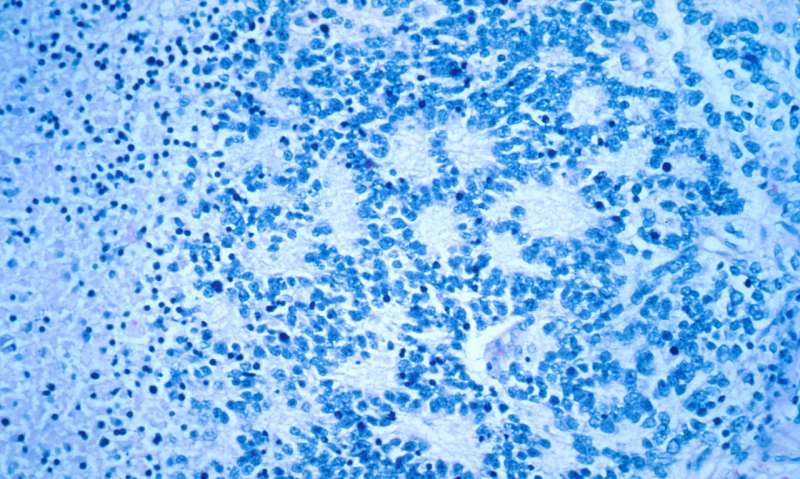December 7, 2018 report
Study may offer doctors a more effective way to treat neuroblastoma

A very large team of researchers, mostly from multiple institutions across Germany, has found what might be a better way to treat patients with neuroblastoma, a type of cancer. In their paper published in the journal Science, the group describes their genetic study of patients with neuroblastoma, what they found, and their hope that their discovery might soon be used to better treat patients with the ailment.
Neuroblastoma comprises tumor development in certain types of nerve tissue. It is most common in newborn babies and infants, and generally results in tumors in the adrenal gland, though sometimes tumors can also develop in the neck, spine or pelvis. Neuroblastoma is the third most common kind of cancer in children, representing approximately 7.5 percent of all pediatric diagnoses. Prior research has found that it is much more aggressive in some cases than it is in others—in some cases, it actually goes away on its own, while in the worst cases, it kills the patient. Noting that it would be very helpful for doctors if they knew upon initial diagnosis how aggressive a tumor is likely to be, researchers have sought ways to categorize them. In this new effort, the researchers believe they have found a way to do just that.
To learn more about what lies behind the aggressiveness of neuroblastoma, the researchers studied DNA—prior research had shown that neuroblastoma is a genetically based form of cancer. They collected over 400 tumor samples and subjected them to an analysis that included looking for mutations in genes involved in maintaining telomeres. They found they were able to find correlations between such mutations and the aggressiveness of neuroblastoma. Those that lacked such mutations were most often found in low-risk tumors. Tumors with such mutations were more likely to represent intermediate-risk tumors. High-risk tumors also had such a mutation, but they also had mutations in other key gene pathways.
The researchers suggest their findings could lead to new ways to treat neuroblastoma by offering doctors a reliable means for identifying at initial diagnoses how aggressive metastasis is likely to be.
More information: Sandra Ackermann et al. A mechanistic classification of clinical phenotypes in neuroblastoma, Science (2018). DOI: 10.1126/science.aat6768
© 2018 Science X Network














